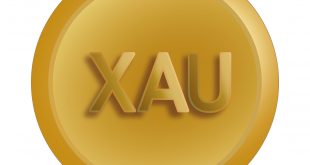In early March 2025, global financial markets were unsettled by U.S. tariffs and fears of an economic slowdown, boosting safe-haven currencies like the Japanese yen and Swiss franc. By April 22, 2025, the market has evolved, shaped by ongoing trade disputes, shifting monetary policies, and new geopolitical developments.
This analysis compares the currency market dynamics of March 10, 2025, with the current environment, focusing on the performance of the yen, Swiss franc, and broader market trends, with figures updated to reflect today’s market conditions for the USDJPY pair.
Market Context in March 2025
Economic and Policy Drivers
In March 2025, markets were disrupted by U.S. tariffs on key trading partners, including Canada, Mexico, and China, with some tariffs delayed for a month. These fueled fears of a global trade war and a U.S. economic slowdown. Investors reduced confidence in the U.S. economy, cutting net long dollar positions from $35.2 billion in January to $15.3 billion by March, based on currency futures data. The U.S. dollar weakened significantly, dropping over 3% against major peers in the prior week, its worst performance since November 2022.
Safe-Haven Performance
Japanese Yen: The yen strengthened by 0.7% to 147.035 per dollar on March 10, hitting a five-month high of 146.94 the previous Friday. Investors sought the yen as a hedge against trade tensions and U.S. recession fears, supported by expectations of a hawkish Bank of Japan (BoJ) and strong wage negotiations.
Swiss Franc: The Swiss franc reached a three-month high of 0.87635 per dollar, driven by risk-averse investors seeking stability amid U.S. growth concerns.
Other Currencies: The euro rose 0.18% against the dollar, bolstered by fiscal reforms in Germany and anticipated European defense spending. The Norwegian crown gained due to inflationary pressures, while China’s yuan weakened after a drop in its consumer price index. The British pound stabilized at $1.2923, awaiting GDP data.
Broader Market Trends
Global stock markets were volatile, with investors anticipating U.S. Federal Reserve rate cuts as early as May to counter economic risks. The eurozone saw improved investor morale, driven by fiscal reforms and increased defense spending, particularly after U.S. military aid to Ukraine was frozen.
Market Landscape on April 22, 2025
Economic and Policy Drivers
As of April 22, 2025, trade tensions continue, with recent U.S. tariffs, including a 50% levy on steel and aluminum from Canada, prompting retaliatory measures like Canada’s 25% tariff on U.S. electricity exports. Some tariffs on Canada and Mexico were exempted for a month under a North American trade pact, offering temporary relief. The U.S. dollar’s safe-haven status has weakened further due to tariff-related growth concerns. Markets now price in a 60% chance of a Federal Reserve rate cut in May, with 110 basis points of cuts expected by December 2025. Global recession fears have intensified, with a $6.5 trillion loss in U.S. stock market value last week.
Safe-Haven Performance
Japanese Yen: The yen has strengthened significantly to 140.26 per dollar as of April 22, reflecting a 0.42% daily gain and a 1.91% weekly gain, as per TradingView data. Its rise is driven by heightened U.S. recession fears, declining U.S. yields, and Japan’s rising bond yields, supported by BoJ’s tightening policy. The USDJPY pair is in a bearish trend, with technical analysis indicating a potential head and shoulders pattern and further downside toward 139.00.
Swiss Franc: The Swiss franc has surged to 0.8470 per dollar, up 1.2% in a single session and 3.0% over the past week, reaching multi-month highs. Its strength is fueled by global market sell-offs and ongoing tariff uncertainties.
Other Currencies: The euro has climbed to $1.1020, supported by a Ukraine ceasefire and increased European defense spending. Sterling has weakened to $1.2850 due to UK economic concerns. The Australian dollar hit a five-year low at $0.5980, and the New Zealand dollar fell to $0.5530. The Canadian dollar has gained, trading at C$1.3720, amid tariff escalations.
Broader Market Trends
Global markets remain volatile, with Asian and U.S. stock indices dropping sharply in early April. Gold prices hover near record highs, driven by geopolitical tensions and central bank demand. U.S. 10-year Treasury yields have fallen to 3.80%, and Japan’s 10-year bond yields have dropped to 0.90%, reflecting demand for low-risk assets. Hedge funds have increased allocations to yen and Swiss franc, while real money investors continue buying gold and moderately supporting the euro. Technical analysis for USDJPY shows a strong sell signal, with the pair down 5.13% over the past month and 8.94% over the past year, reinforcing bearish sentiment.
Comparative Analysis
Safe-Haven Currencies
Yen: In March, the yen reached 146.94 per dollar, driven by trade tensions and BoJ policy expectations. By April, it has strengthened to 140.26, a significant gain, reflecting deeper U.S. recession fears and a sharper decline in U.S. yields. Its role as a hedge against trade wars is robust, with technical indicators suggesting further downside for USDJPY toward 139.00.
Swiss Franc: The Swiss franc’s rise from 0.87635 in March to 0.8470 in April signals stronger safe-haven demand, fueled by broader market sell-offs and tariff concerns. Its performance has surpassed March levels, reflecting heightened global risk aversion.
Dollar’s Decline: The U.S. dollar’s 3% weekly drop in March has worsened, with the dollar index falling to 102.30 after a 1.5% weekly decline in April. Its safe-haven status has eroded further as investors shift to yen, Swiss franc, and gold.
Market Sentiment and Policy
In March, markets focused on tariff delays and U.S. slowdown fears, with eurozone optimism driven by fiscal reforms. By April, the emphasis has shifted to the tangible impacts of tariffs, with U.S. stock market losses and Federal Reserve rate cut expectations shaping sentiment. The eurozone’s positive outlook continues, supported by a Ukraine ceasefire and defense spending, but global recession fears have deepened, boosting demand for safe-haven assets.
Emerging Trends
Gold and Bonds: Gold and government bonds, less prominent in March, have become critical safe-haven assets by April, with gold prices near all-time highs and bond yields declining significantly.
Alternative Hedges: April sees growing interest in high-carry currencies like the Brazilian real, which offer lower trade exposure, a trend not noted in March.
Geopolitical Shifts: The Ukraine ceasefire in April has strengthened the euro and European markets, a development absent in March when U.S. aid freezes dominated discussions.
The currency markets of March 10, 2025, and April 22, 2025, both highlight the strength of safe-haven currencies like the Japanese yen and Swiss franc amid trade tensions and U.S. economic uncertainty. However, April’s landscape shows intensified trends, with the yen surging to 140.26 per dollar and the Swiss franc to 0.8470, the U.S. dollar’s safe-haven status further diminished, and global recession fears driving broader market volatility. The euro’s resilience, gold’s surge, and emerging hedges like the Brazilian real reflect a market adapting to evolving economic and geopolitical realities. As trade disputes and monetary policy shifts continue, safe-haven assets remain a vital refuge for investors in a turbulent global market.

 Noor Trends News, Technical Analysis, Educational Tools and Recommendations
Noor Trends News, Technical Analysis, Educational Tools and Recommendations




